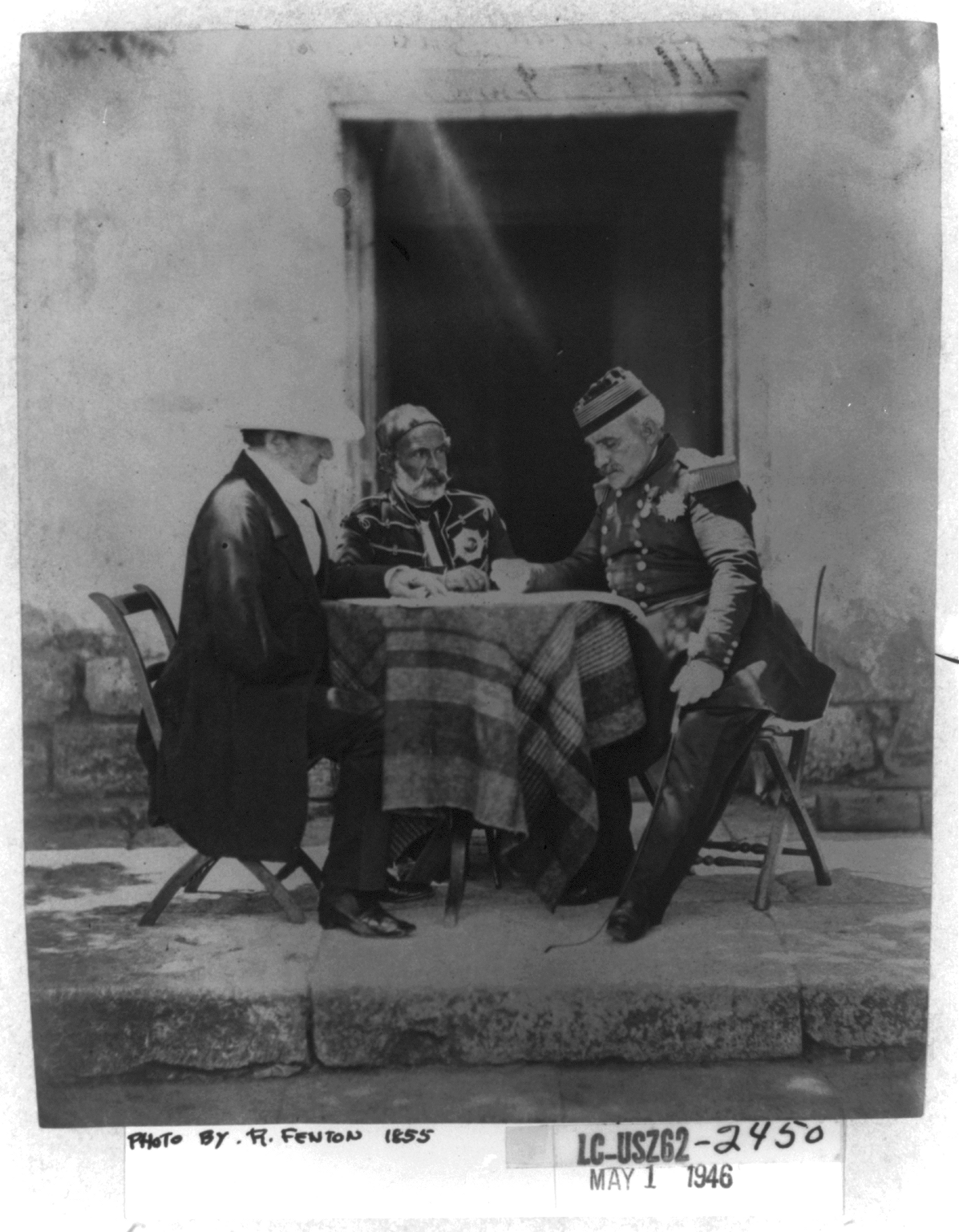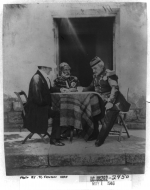Created by Peter Hoffenberg on Sun, 05/23/2021 - 12:19
Description:
That image is Number 270, or “The Council of War held at Lord Raglan’s Headquarters on the Morning of the Successful Attack on the Mamelon” in Roger Fenton's collection of Crimean War photographs. The official Catalogue noted that this and the other images were “intended to illustrate faithfully the Scenery of the Camps; to display prominent incidents of Military Life, as well as to perpetuate the Portraits of those distinguished Officers” (3). The immediate context was “the ever Memorable Siege of Sebastopol” and the figures included English, French and Ottoman Turkish commanders. Were the images “a truthful representation,” or, as with other forms, were they a representational fiction, or at least only truthful from one particular perspective? “Truthful” did not include the carnage of Crimea, the mangled and dead humans and animals. But why should it? Answers include censorship, the demands of patriotism during war-time and others considered by contemporaries and later scholars, most notably historians of photography and journalism.
Figures: Ömer Lûtfi Paşa (1806-1871); Raglan, FitzRoy James Henry Somerset, Baron (1788-1855); Pélissier, Aimable-Jean-Jacques, duc de Malakoff (1794-1864)
Medium: photographic print : salted paper ; 19 x 16 cm.
Call Number/Physical Location: PH - Fenton (R.), no. 13a (A size) [P&P], Library of Congress
Source Collection: Fenton, Roger, 1819-1869. Roger Fenton Crimean War photograph collection
Repository: Library of Congress Prints and Photographs Division Washington, D.C. 20540 USA
Digital Id: cph 3g09127 //hdl.loc.gov/loc.pnp/cph.3g09127cph 3a06132 //hdl.loc.gov/loc.pnp/cph.3a06132
Library of Congress Control Number: 2001697658
Reproduction Number: LC-USZC4-9127 (color film copy transparency) LC-USZ62-2450 (b&w film copy neg.)
Rights Advisory: No known restrictions on publication.
LCCN Permalink: https://lccn.loc.gov/2001697658
Rights & Access: The contents of the Library of Congress Fenton Crimean War Photographs are in the public domain and are free to use and reuse. Credit Line: Library of Congress, Manuscript Division, Fenton Crimean War Photographs.
Works Cited
Exhibition of the Photographic Pictures taken in The Crimea, By Roger Fenton, Esq. During the Spring and Summer of the Present Year, at the Gallery of the Water Colour Society, No. 5, Pall Mall East. London: Messrs. Thomas Agnew and Sons, 1855.
Copyright:
Associated Place(s)
Timeline of Events Associated with “The Council of War held at Lord Raglan’s Headquarters on the Morning of the Successful Attack on the Mamelon"
Artist:
- Roger Fenton


